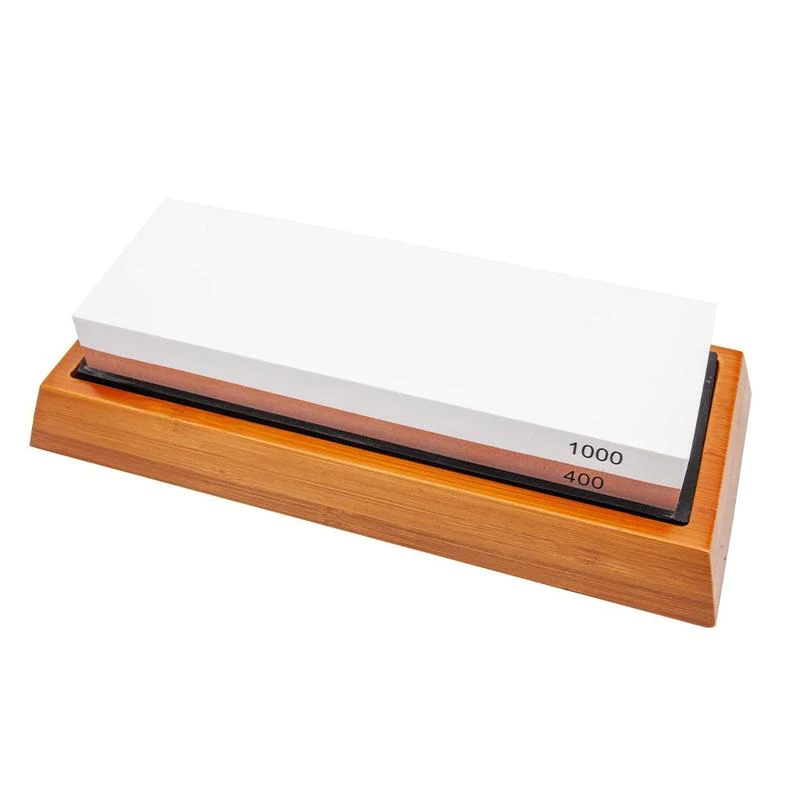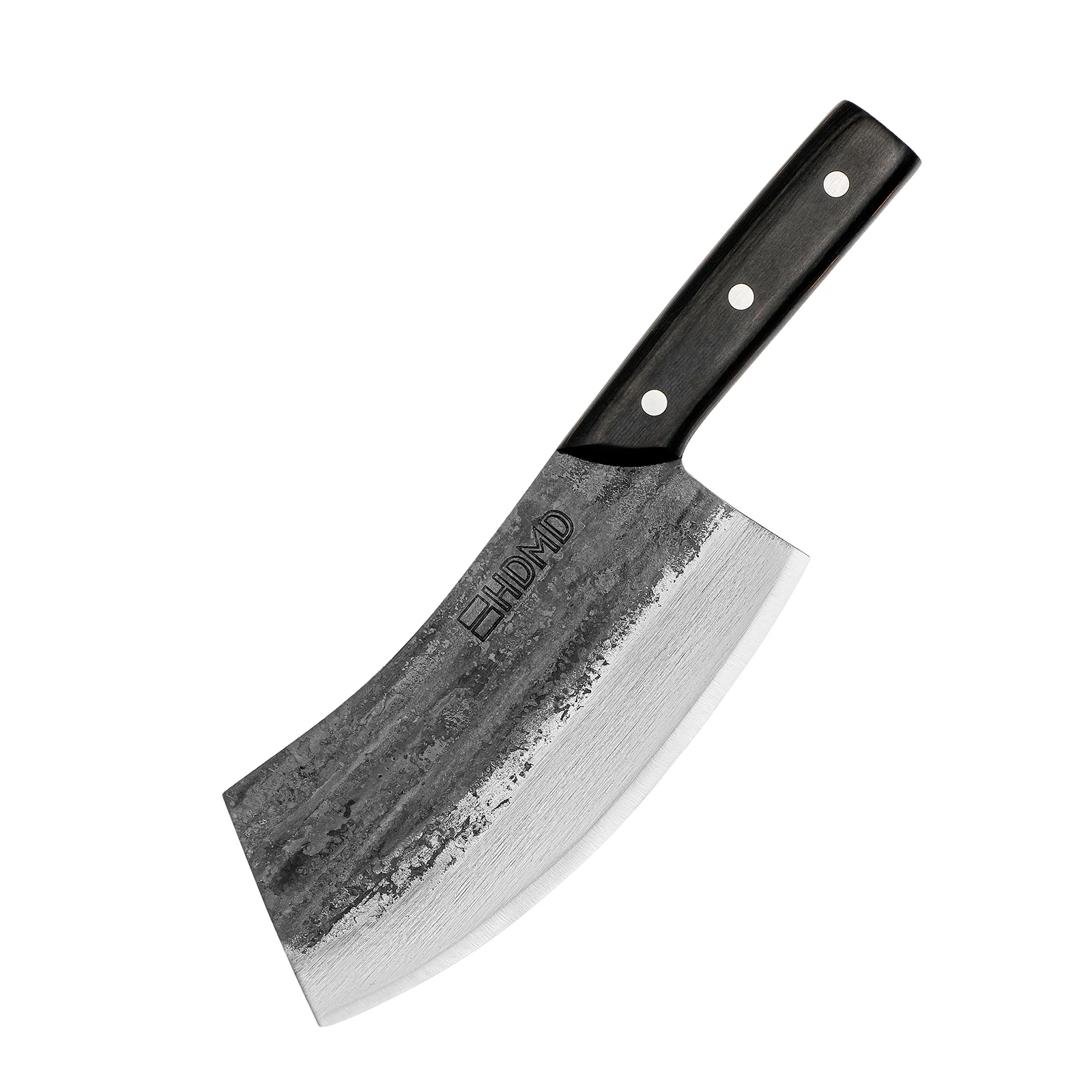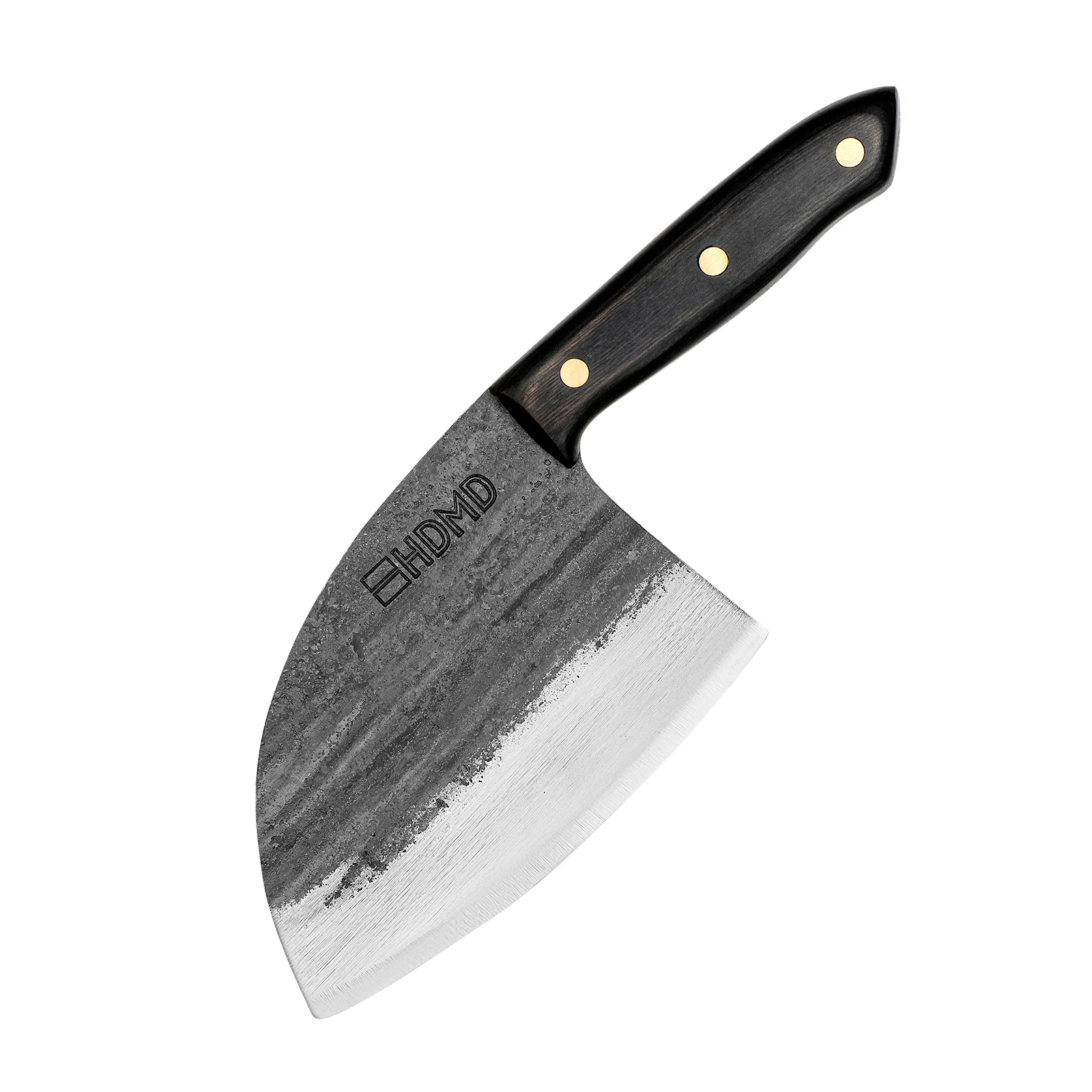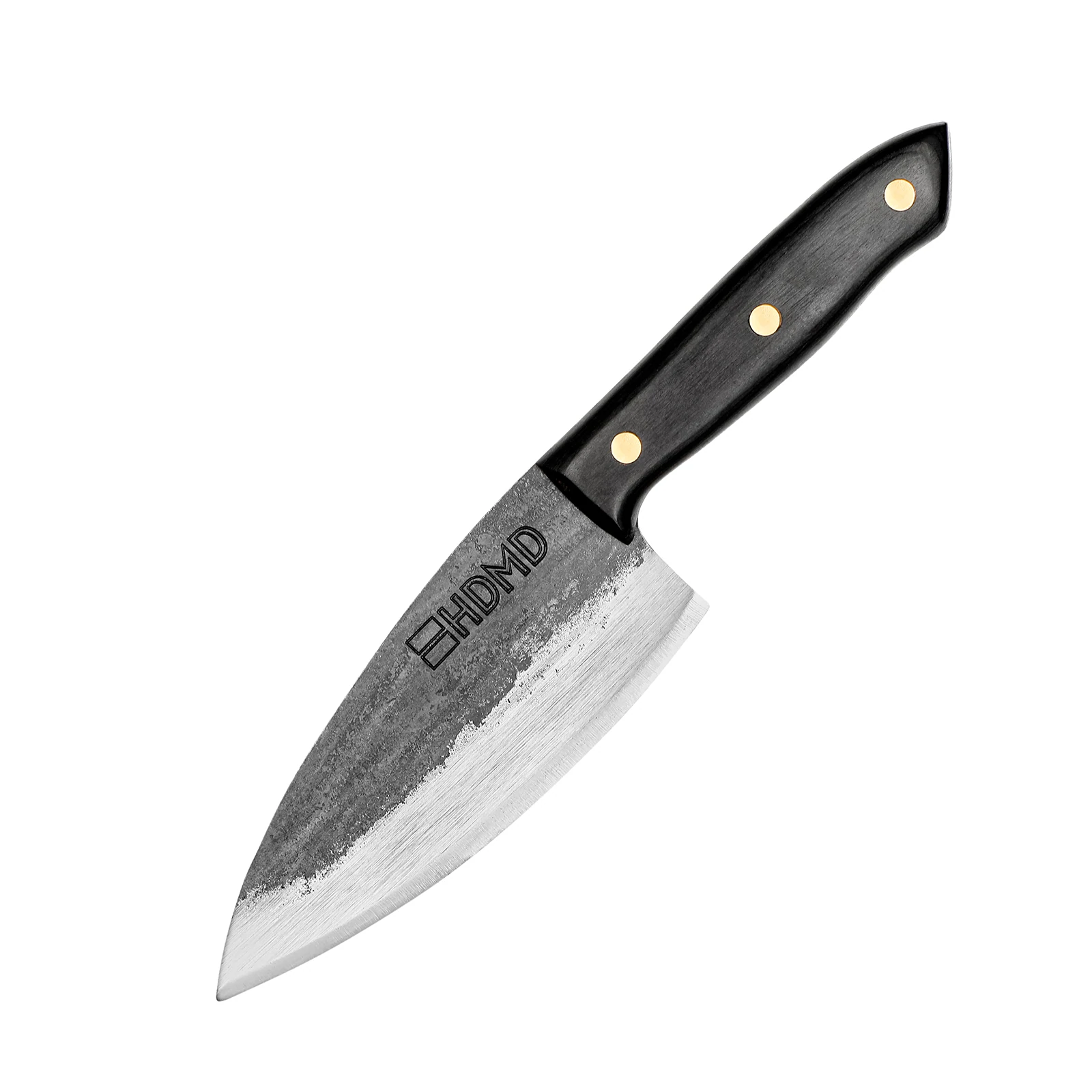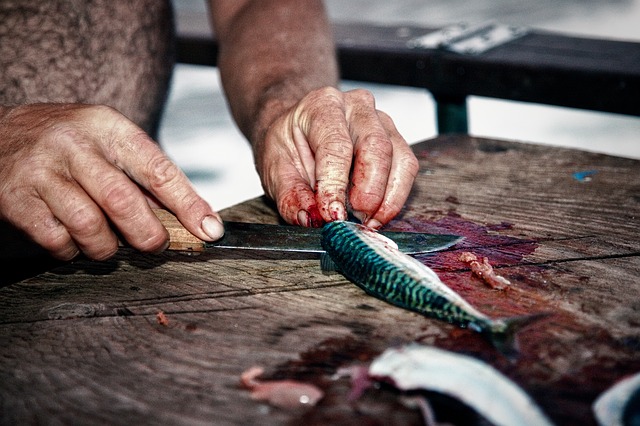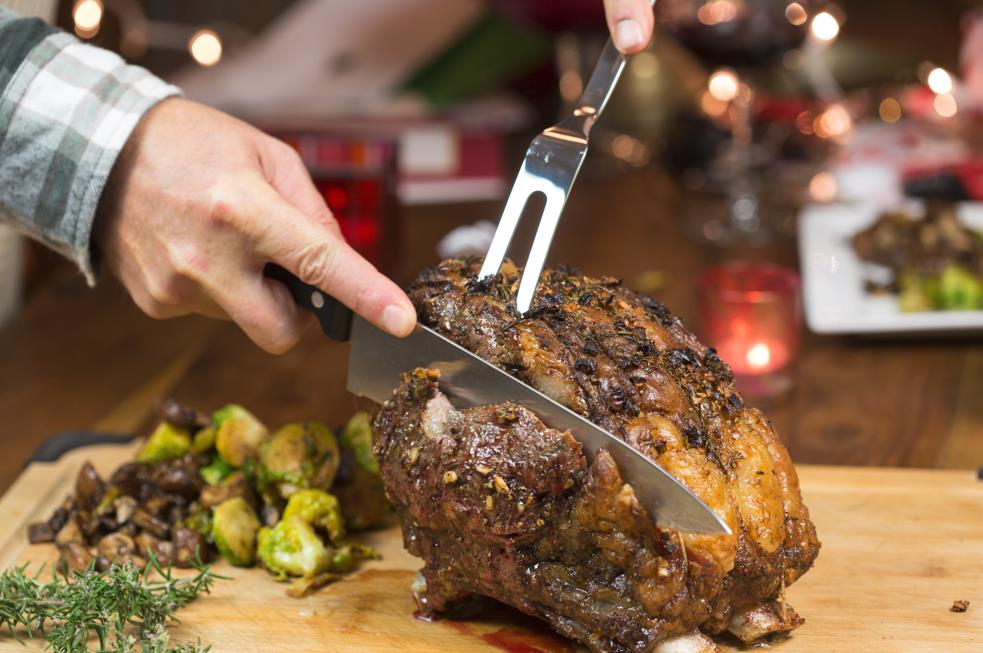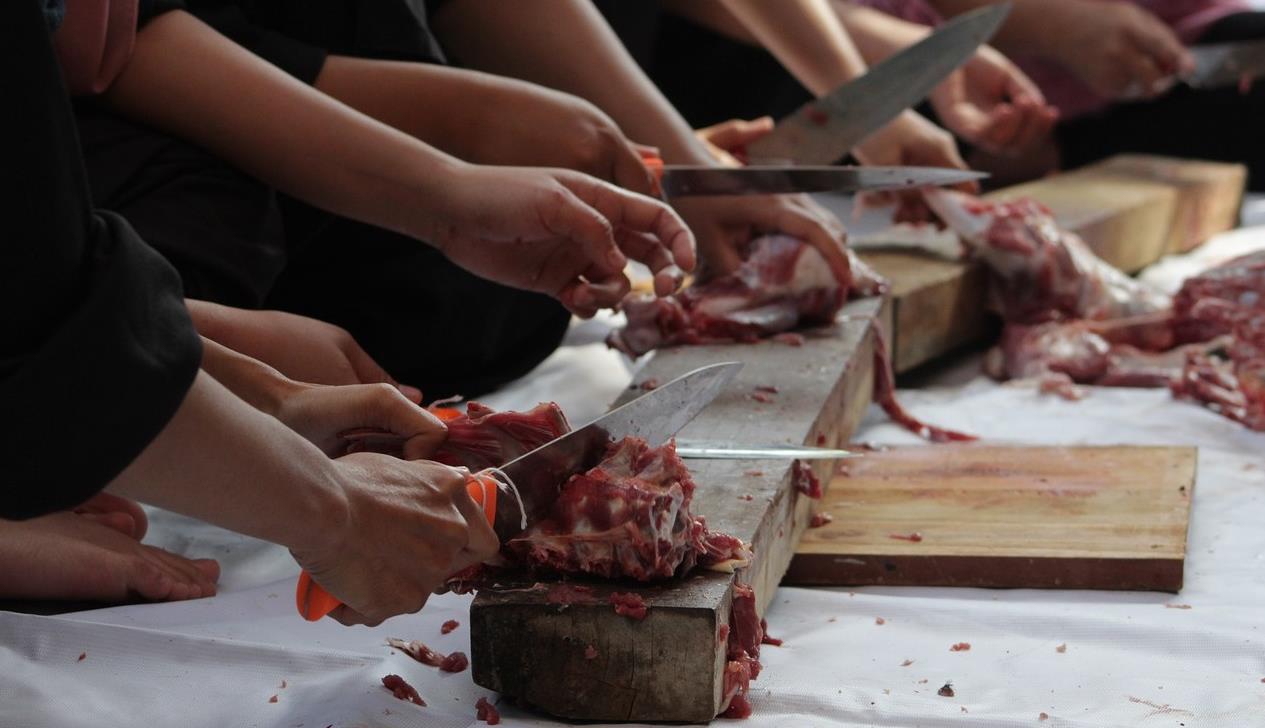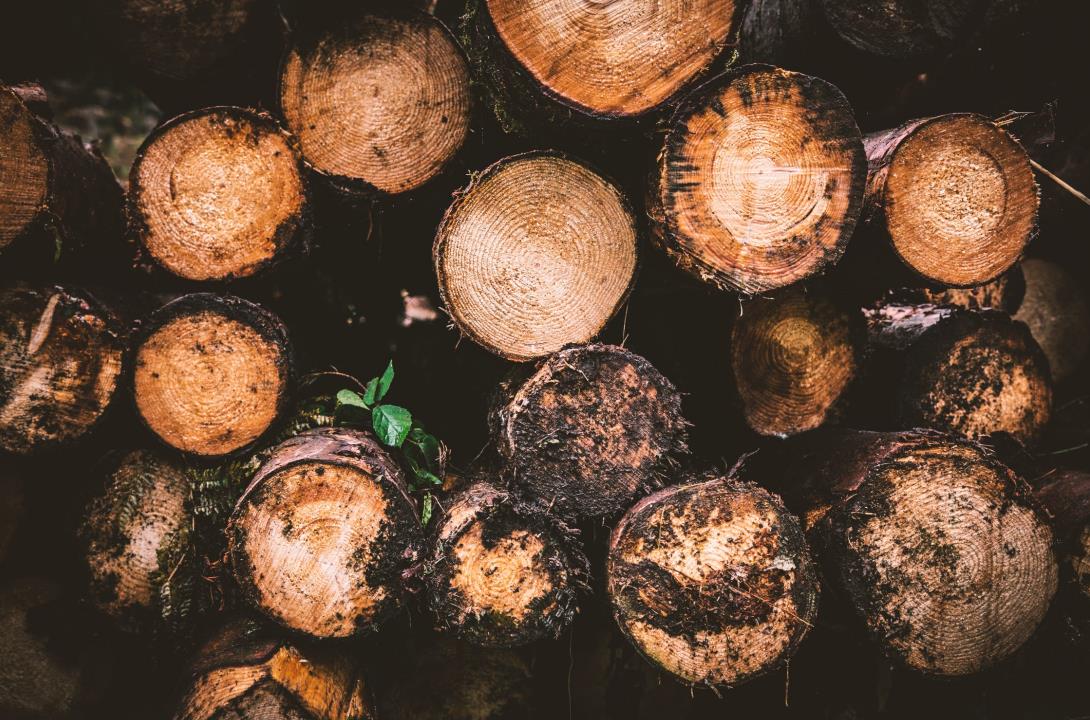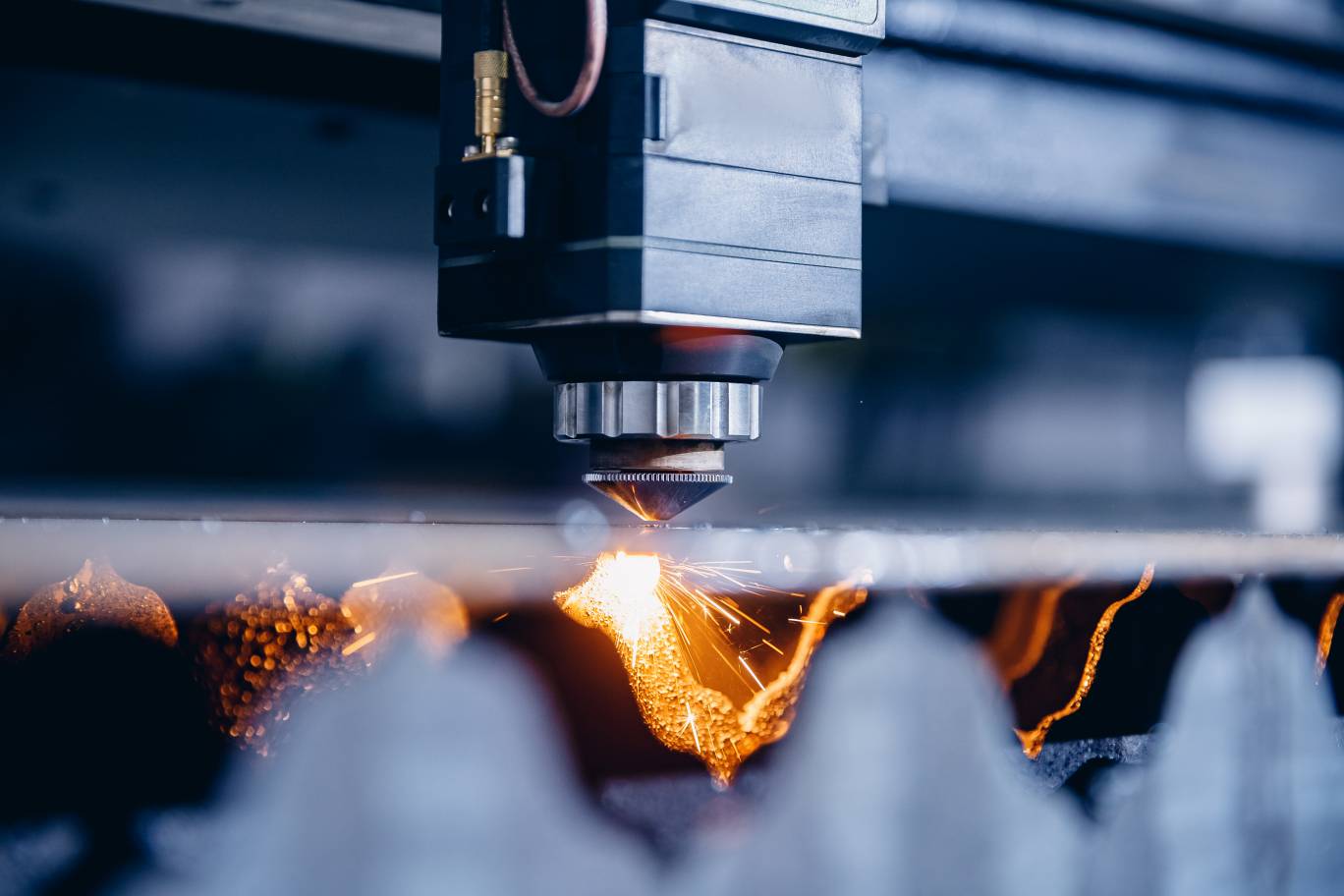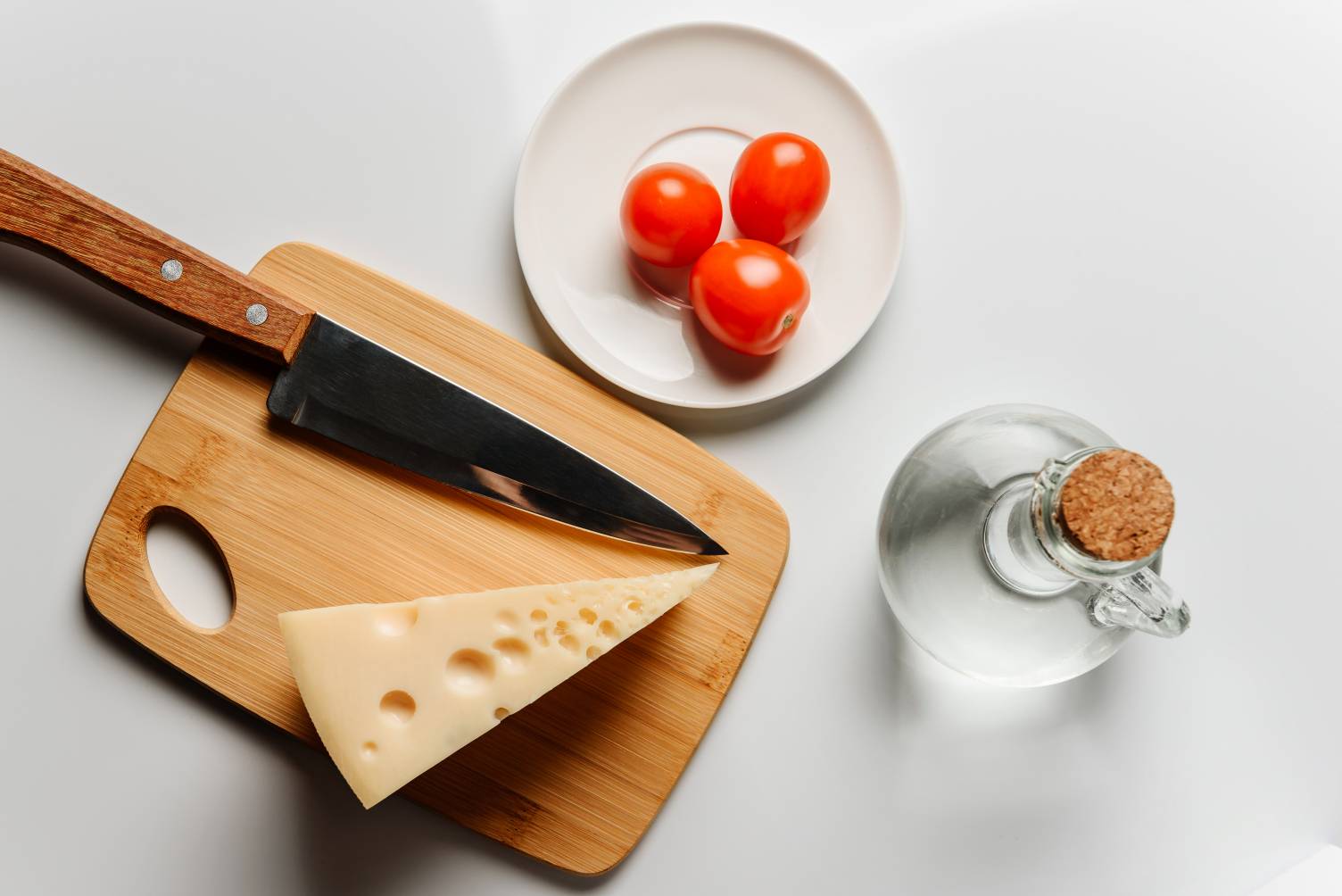The sharpening stone you choose determines how easy or difficult it is to keep your knife sharp. If we categorize them with different lubricating methods, the stones come in two basic types: oil and water. While they both have their advantages, it’s essential to know the difference so you can choose the right one for your needs. So, how do you tell if the sharpening stone is oil or water?
The most common method is to add a few drops of water to the stone’s surface. If the water beads up or pools on the surface, it’s likely an oil stone. Oil stones feature hard and slick surfaces, so the water won’t penetrate through. Water stones feature a more porous surface, so the water will seep in and not bead up. Take caution not to add oil to a water stone because when sharpening, the broken grains will start grinding on the newly exposed grains, thus destroying the stone.
To put it simply, the lubricant medium used while sharpening the blade is different.
No set standard exists on how to tell if a sharpening stone is oil or water, but there are some general guidelines you can follow. First, check the packaging. If it’s not clearly labeled, look for a dark stone in color. Water stones are typically dark in color, while oil stones are lighter. This article will elaborate more on how to tell whether sharpening stone is oil or water using several other methods.
Table of contents
What is a water stone?
A waters stone is a sharpening stone that uses water as a lubricant. Water stones are usually softer than oil stones and cut faster. The stones are ideal for those new to sharpening because of their ease of use and fast cutting. However, they require more frequent flattening than oil stones and can be more expensive.
Water stones can either be synthetic or natural. Synthetic water stones are those designed with synthetic abrasives such as silicon carbide, oxides of aluminum, diamond powder, or natural stone powder. Natural water stones occur naturally from quarries like those in Japan and Belgium.
Water stones come in various grits, from very coarse (100-200 grit) to very fine (3000+ grit). The coarser the grit, the more material you can remove quickly. The finer the grit, the more you can polish and hone the edge.
Handpicked for you
True cutting power in the palm of your hand
Features of water stone
- Feel: Often have a more porous surface.
- Usage: Require water as a lubricant, metal filings float away.
- Maintenance: Need soaking before use; frequent flattening may be needed.
Advantages
- Faster sharpening due to abrasive slurry
- Usually less expensive
Disadvantages
- More maintenance required
- Can wear down quicker
How to use a water stone
A water stone is easy to use. Below is a step-by-step guide on how to use a water stone:
- Soak the stone in water before use to lubricate the surface and prevent clogging. Five minutes is enough for fine-grit stones and up to 10 minutes for coarse-grit stones.
- Start with the coarse-grit side and use light to medium strokes to sharpen the blade.
- Place the stone on a non-slip surface with the coarse grit side facing up. You can place two wood pieces on either side of the stone to keep it from moving or use a wet piece of cloth underneath it.
- Firmly hold the knife handle with your dominant hand and place the blade on the stone at a 10-20 degree angle.
- Use your other hand to apply even pressure as you move the blade back and forth across the stone.
- Keep the blade at the same angle throughout the sharpening process. Use a light touch for thin blades and more pressure for thicker blades.
- After 10 to 30 strokes, check the blade to see if it’s still dull or if there’s a burr (a thin line of metal) forming on the edge. If there’s a burr, continue sharpening until it’s gone. If the blade is still dull, move on to the next grit.
- You can wipe off the slurry (the paste that forms from the metal and stone) or leave it on for a more polished edge. Clean your knife and store it safely.
What is an oil stone?
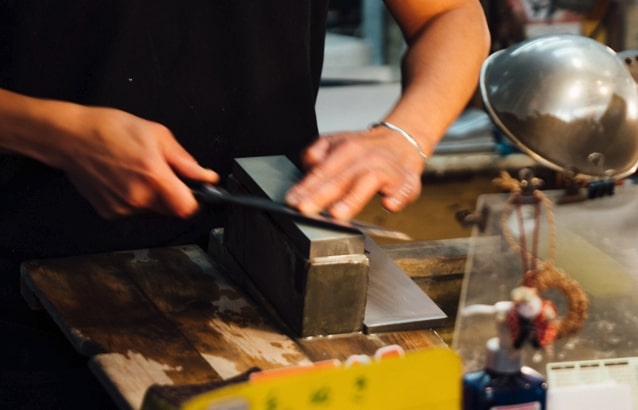
An oil stone is a sharpening stone that uses oil to remove metal filings from the blade. Oil stones are made of different materials, including aluminum oxide, silicon carbide, and novaculite. The stones are usually harder than water stones and cut more slowly.
Aluminum oxide is the most coarse and is used for general sharpening. Oil Stones made of aluminum oxide are ideal for those new to sharpening because they’re less expensive and require less time to sharpen a blade. Different variants exist, such as the India Stones.
Novaculite is a naturally occurring rock used for centuries to make oilstones. Popularly used in Arkansas, these oil stones can be hard or soft depending on the density and finish. Silicon carbide is perhaps the fastest oil stone available. You can find the stone in either coarse, medium, or fine grits and make excellent stones for the initial stages of sharpening.
Features of oil stone
- Feel: They’re usually smoother to the touch.
- Usage: Require oil for lubrication, which binds metal filings.
- Maintenance: Easier to clean, can be wiped with a cloth.
Advantages
- Longer lifespan
- Better for heavy-duty sharpening
Disadvantages:
- Messier process
- Slower cutting rate
How to use an oil stone
Oil stones are excellent options if you want to achieve a polished edge. Follow the steps below to use an oil stone:
- First, place a towel on a flat surface to prevent slippage. You can use a wet towel but ensure you drain all the water first.
- Position the stone on the towel with the coarse side up. Depending on your knife’s condition, you may want to start with a coarse or fine grit oil stone.
- Pour a small amount of oil on the stone. One or two tablespoons is usually enough. You can use mineral oil, honing oil, or even WD-40 if you don’t have any honing oil.
- Spread the oil around the surface of the stone with your fingers. Ensure you lubricate the entire surface.
- Start with the coarse side and use light to medium strokes. Use even pressure to move the blade back and forth across the stone.
- Maintain a 10 to 20-degree angle between the blade and the stone throughout the sharpening process. After 10 to 30 strokes on each blade side, check the edge. If there’s a burr, continue sharpening until it’s gone. If the blade is still dull, move on to the fine grit side.
- Add more oil if you notice the stone starting to dry out. Wipe off the slurry (the paste that forms from the metal and stone) or leave it on for a more polished edge.
- After sharpening, clean your knife and stone with a cloth. Wipe off any excess oil before storing the knife and stone.
How to tell if your sharpening stone is oil or water
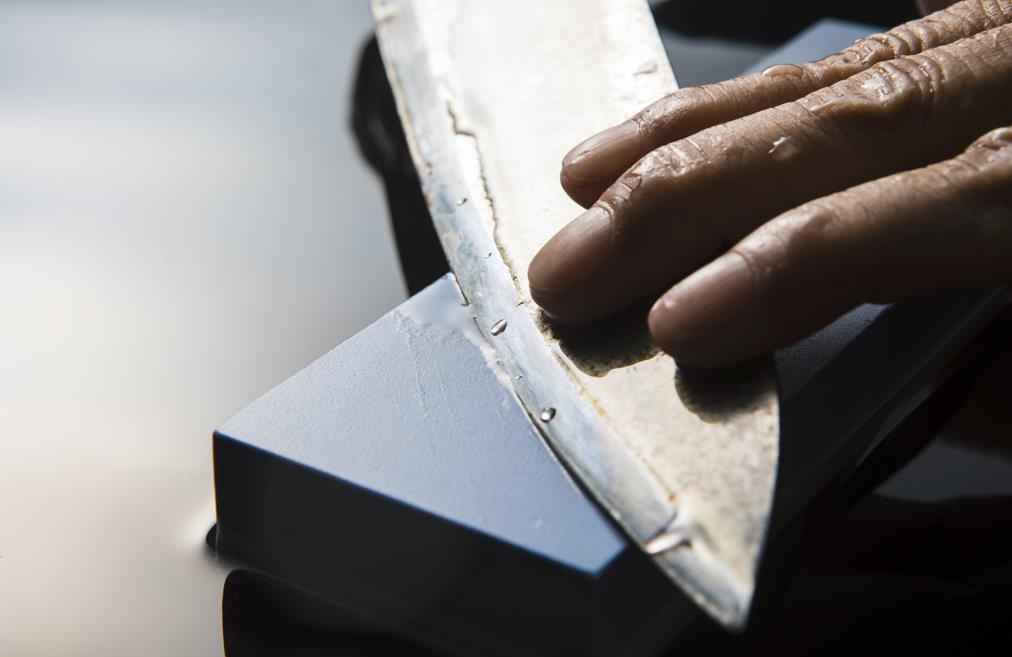
There’s no set rule or standard for how to tell if a sharpening stone is oil or water, but a few indicators can help you figure it out. For one, you can start by checking the packaging or label. Manufacturers often specify the intended use of the stone. If the stone was a gift or lacks documentation, a visual assessment and a simple touch test can offer clues.
Below are more ways to tell an oil stone from a water stone:
- Feel the surface: Water stones tend to be softer and may even display visible wear or dents. They often come in lighter colors and feel slightly gritty to the touch. Oil stones are usually denser, and because of the oil, they might have a darker shade. The oil can give these stones a smooth, almost glassy surface. Touching the stone’s surface should reveal some of these characteristics. A fine porous surface suggests a water stone, whereas a smoother, non-porous surface is indicative of an oil stone.
- Look at the color: A water stone is usually gray or black, but some may be brown. However, oil stones appear darker with a white to brownish-gray color.
- Hardness test: Mohs scale of mineral hardness tests the hardness of a sharpening stone. Oil stones are generally hard, while water stones are soft, so a water stone will rank lower on the hardness scale.
- Listen to the grinding sound: Listen to the sound the stone produces when sharpening. A dry-water stone will produce a relatively high-pitched sound, whereas an oiled water stone will produce a lower-pitched sound.
- Use a magnet: Another way to tell an oil stone from a water stone is by using a magnet. For this test, you’ll need a small magnet. Place the magnet on the stone and see if it sticks. If the magnet sticks to the stone, it’s an oil stone; if not, it’s a water stone.
Oil vs. water sharpening stone
The argument that oil stones are better than water stones or vice versa is a long-running debate. No one can definitively say which type of sharpening stone is better. It depends on your preferences, what you’re sharpening, and how often you’re sharpening.
Which one should you choose?
For instance, if you’re a beginner or don’t sharpen often, water stones are a good choice because they are faster-cutting and easier to clean after use. Note that water stones wear down faster than oil stones, so you’ll need to replace them more often.
If you’re an experienced sharpener or sharpen frequently, oil stones are a good choice because they require less frequent dressing (re-flattening) and can last longer. Unfortunately, they are a lot messier to use than water stones.
Can you use water for oil stones and oil for water stones?
It’s not possible to use water on oil stones that already have oil. The water will sit on top of the oil and not penetrate through. As such, it won’t be able to sharpen the knife. However, if the oil stone is new or has never been used with oil before, the stone will absorb the water, and you’ll be able to sharpen your knife.
Using oil on a water stone means that you’ll never use that stone with water again. The oil will saturate the stone’s pores, and the water will bead up on top of the oil. Consequently, the stone won’t be able to sharpen your knife correctly.
The best thing you can do is use the sharpening stone according to its intended purpose. If you want to use a water stone, only use water; if you’re using an oil stone, only use oil when sharpening. Through this method, you’ll get the best results and prolong the life of your sharpening stone.
| Feature | Oil stone | Water stone |
| Lubricant | Oil | Water |
| Clean-up | Wipe with cloth | Rinse with water; may need soak |
| Sharpening Rate | Slower, more controlled | Faster, more abrasive |
| Maintenance | Less frequent, easier | More frequent, more involved |
Closing
Under most circumstances, you will get the proper lubricating information when purchasing whetstones. Both oil and water stones are whetstones, they sharpen your blade quite similarly.
Our blog has more information on whetstones, artificial knife sharpeners and how to use them if you want excellent results. Visit our store for a selection of high quality kitchen knives that will change your kitchen experience.
FAQs
What type of oil is recommended for use with oil sharpening stones?
For oil sharpening stones, it’s best to use a refined mineral oil. This type of oil is specifically designed to be non-hardening and to provide the stone with a smooth, sharp surface for sharpening your knives.
How to determine the appropriate stone type to sharpen my knife?
You can identify the appropriate sharpening stone by considering the tools you’re sharpening and the level of grit you require. Knives that are extremely dull or damaged may need a coarse grit, while fine-grit stones are suitable for regular maintenance.
What are the differences and benefits of diamond sharpening stones compared to other whetstones?
Diamond sharpening stones are known for their fast-cutting action and do not require pre-soaking. They maintain a flat surface longer compared to natural whetstones, which wear more quickly but can offer a finer, polished edge when finished correctly.
How to flatten a whetstone?
To flatten a whetstone, you can use a flattening plate or another very flat, abrasive surface. Gently rub the stone’s surface in a circular or back-and-forth motion to evenly wear down any uneven areas, restoring its flatness for consistent sharpening.

